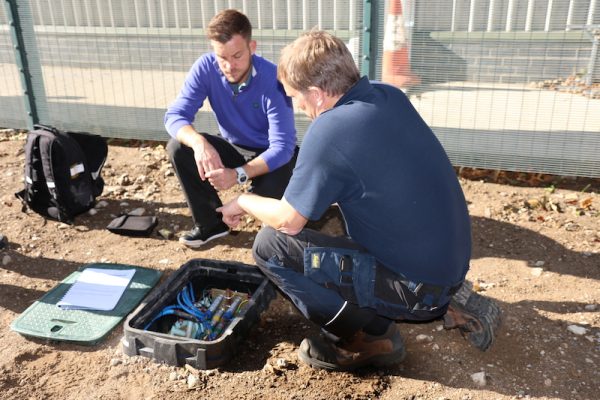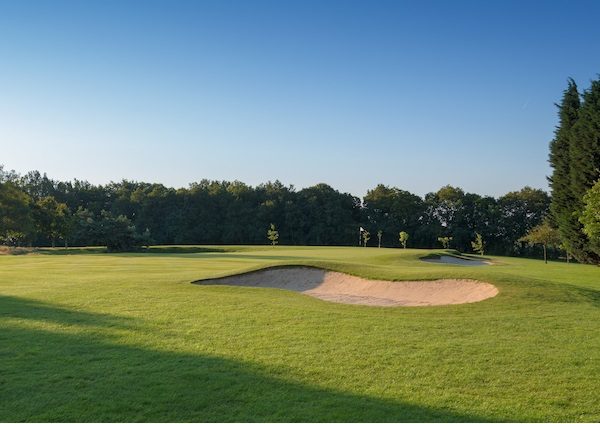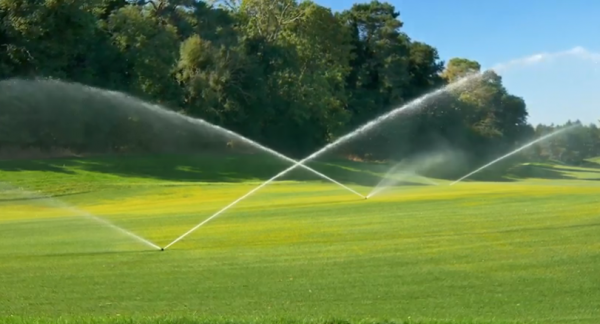7-Step Renovation Roadmap for Golf Course Irrigation Systems
7-Step Renovation Roadmap for Golf Course Irrigation Systems
Renovating a golf course irrigation system is not an undertaking to be taken lightly. Whether it’s a complete system renovation or a partial one, following a seven-step renovation roadmap makes the process easier and less disruptive. Some key players share their experiences to help those considering a renovation in the future.
Step 1: Course Needs

Clubs can generally identify what they need to do in the broadest sense. The Course Manager may have provided reports about the current system, recording additional working hours spent hand watering and the increasing costs of maintaining an ageing or deteriorating system.
But renovation planning should go beyond that and consider the wider vision for the course. Does it meet members’ and visitors’ expectations? If not, where does it fall short? Are any architectural changes needed in order to remain competitive? Are there operational, efficiency or regulatory challenges that could be solved with a better irrigation system?
Step 2: Irrigation Evaluation
Lee Knight, director of specialist sports turf contractor Irrigation Control, suggests clubs consider the following as part of a comprehensive evaluation.
Contact your local planning department at the outset to determine what’s required and confirm timescales and cost.
An audit of your current system will determine the scale of renovation required and the enhancements needed. A significant proportion can be capital expenditure for infrastructure improvements which also need to be considered and evaluated.
The most important is the water source. Ideally, mains water should only be used as a back-up as the cost is high and there may be potential restrictions. Are alternative sources available on site, such as boreholes, rivers, lakes or wells, and can these be incorporated? Licenses that have lapsed or resources that have never been considered could be investigated along with the additional implications of sourcing power for abstraction and access for drilling which will need to be included in any planning application. A helpful option when looking for alternative water sources is to commission an independent hydrologist to carry out a desktop study. This indicates the potential for water and provides advice on licensing and longer-term feasibility.
Ensure water storage meets initial and future demand. Where mains water is the only source, consider allowing for additional capacity so that in the event of drought, the water can be managed over a greater period of time to maintain critical areas. Carry out ground surveys are and consult planners to determine any requirements for construction or for the pump house.
Check power supplies to determine suitability. Again, consider scope for expansion not just at the irrigation point but also at the point of distribution. The increase in loads for the irrigation system may affect planned works at the clubhouse if this is the point of power distribution.
Existing infrastructure isn’t always sited in the best location. If new power and water supplies are required, explore whether a new location is more suitable and offers potential savings when bringing the services to site. Is there space for increased storage?
Step 3: Choosing Your Team

Your renovation’s success depends on having the right team in place. Your golf architect, irrigation consultant, contractor, manufacturer and distributor are all specialists in their respective fields and each has an important and distinct role to play in the project plan.
Last year, Goring & Streatley invested £700,000 upgrading to a Rain Bird IC System™ and Stratus® II Central Control. The core irrigation infrastructure was completely replaced, with new pipework and rotors across greens, tees, approaches and fairways. General Manager Martin Hucklesby advises, “Even if you have a very good understanding of what’s involved in an irrigation renovation project, the very first thing to do is find someone you can trust. Before you go out to tender, before you do anything, find yourself a recognised irrigation consultant to work with you from start to finish as the independent expert who can answer any questions the board or committee have, and verify the information the club needs when making decisions.”
“You need a very solid evaluation process. Investing a significant sum is a business decision and it needs to be thought through. There’s a lot of pressure to do a deal and make decisions quickly but don’t be swayed and take advice from your consultant. Get the timing right. Plan to do the work in the winter – even if it means a delay. Members don’t want the course renovated in summer, so agree the timing of the work with the contractor. Take your time.”
The club’s Course Manager visited other clubs and sought advice from his peers as part of the planning.
Step 4: Master Planning
As irrigation system enhancements are honed to meet the club’s needs, there are a few additional factors to bear in mind.
Is there an opportunity to phase improvements so that immediate upgrades can be made now and other improvements included in second or third phases? Which priorities can the club realistically afford? What timing constraints are there to take into account?
Many projects can be phased to minimise disruption to play and spread the cost. Even small changes can make a real difference and new technologies can now be integrated easily into many older systems to deliver cost savings which can then help fund future upgrades. Your project team can help you answer these questions, and then you’ll be in a position to establish the project scope and scale, and confirm an outline budget.
Step 5: Irrigation System Design and Specification
Lee Knight says it’s critical that clubs spend sufficient time researching both short and long-term requirements.
“Typically schemes are budget-driven and, while this is understandable, it can result in a system which doesn’t meet the course’s long term needs. The Course Manager will obviously have an input as to the requirements, but just as important is having management and members discuss their vision so that the designed solution meets their expectations.”
Step 6: Selecting Your Irrigation Partner

A successful renovation can be measured by long-term results, so it’s vital to choose the right irrigation partner.
Consider
- Total cost of ownership
- Cost of water, energy, parts and labour
- Level of support provided.
- Is this 24/7 with practical help available locally?
- Are references available?
- Will hardware you choose today be compatible with future innovations?
- Technology moves on rapidly. Good decision making now will prevent costly replacement in years to come.
Peter Todd, Estate Manager at Royal Norwich, stresses the importance of considering these factors. “Choosing an irrigation supplier is a 25-year relationship decision, and the level of support that Rain Bird offered us was in excess of the norm. Being in one of the UK’s driest regions, what was at the forefront of our minds was how best to irrigate the site. With 25 years’ experience of Rain Bird systems at The London Club, I knew that the Rain Bird IC System fault finding is simple and quick. Running a diagnostic for 1,250 modules on the system can be done in under a minute with a full check in less than seven minutes.”
Step 7: Managing The Impact
Any renovation project causes disruption, but this can be managed by having a pre-planning meeting with the contractor to identify the following: Programme of works – Agree start and completion dates along with a weekly list of planned works and course areas that will be affected. Club programme – Are any specific competitions or visiting parties booked during the construction period and how can works be tailored to accommodate these? Site compound – Identify storage areas and access points for daily works traffic and deliveries. Determine if size or weight restrictions apply and if time restrictions are needed to manage traffic. Operating hours – Are there restrictions, such as noise because of immediate neighbours? Share this information at the outset. Hole closure – Occasionally it is necessary to close holes during construction for health and safety reasons. Identify if alternative areas can be utilised temporarily or if programmes can be adjusted to accommodate events. Site contacts and responsibilities – Appoint a person at the outset to liaise between club and contractor. Diarise regular meetings to ensure the project team is aligned. Information sharing – Ensure members, staff and visitors are kept informed.
Stewart Judd is General Manager at Bush Hill Park where a complete irrigation renovation project, including a water storage lake and borehole abstraction, was carried out in 2018.
He says, “You really can’t do enough communicating with members – before any work has started, during the build and installation, and afterwards too. We had a weekly news update, a blog, and we used printed newsletters and social media.”
Capitalise on the benefits
“It was a commercial decision but we couldn’t afford not to renovate our irrigation system,” Stewart adds. “Sustainability and environmental concerns were also factors so having invested in more efficient irrigation means we get more for our money, we conserve water, and can manage how we use water. Good reviews about the quality of the course help make our club attractive to new members and visitors and irrigation plays an integral part in that. And we still talk about the renovation. We carry out an annual member survey and compared to last year when it was the toughest, driest summer, we’ve had very positive feedback about the quality of our tees, approaches and greens.”
Looking back, Martin Hucklesby found the process enjoyable. “It can be extremely daunting, especially if you’ve not done it before, and particularly when it comes to all the financial negotiations.
With hindsight, I would allow for a contingency. Technology gets updated quickly and things change over the 3-4 years in the life of a project. Ask your board or committee for some contingency which provides flexibility later on should you need it. The most vital feature defining a great golf course is its irrigation system. I would also use facts to communicate with members – we forget how many miles of cable and man-hours were involved. It helps members understand that it’s possible to play today on a course that’s not suffering from drought because of the significant investment their club made.”
